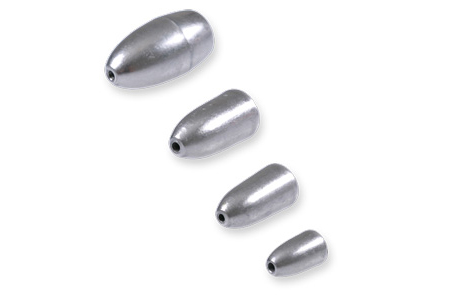Advanced Tungsten Bullets: Exploring Their Power and Precision

Welcome back to Stanford Advanced Materials! In this episode, Eric Smith is joined by Dr. Priya Kapoor, a materials science expert with a focus on military applications, to explore the fascinating world of tungsten bullets. Discover how tungsten’s incredible density and strength make it the go-to material for advanced ammunition used in both military and civilian settings.
Dr. Kapoor delves into the cutting-edge design of MRX bullets, highlighting their precision, stability, and environmental benefits. Learn how these bullets are engineered to reduce ricochet and maximize impact, making them a safer and more effective choice for a variety of tactical scenarios.
Got questions or want to dive deeper into the science behind tungsten bullets? Send an inquiry or connect with us on our social media channels.
Welcome to Stanford Advanced Materials! I’m Eric Smith, and today we’re discussing a fascinating topic, advanced tungsten bullets and their unique characteristics. To help us delve into this subject, I’m joined by Dr. Priya Kapoor, a materials science expert with a focus on military applications. Thanks for joining us, Dr. Kapoor!
Thank you, Eric! Tungsten is a remarkable material, especially when it comes to its use in ammunition. I’m excited to explore its various applications today.
Let’s start with the basics. Tungsten is known for being incredibly dense and strong. How does this translate into its use in ammunition?
Tungsten’s density is one of its key advantages in ammunition. When made into an alloy, tungsten provides the weight and hardness necessary to create bullets that can penetrate deep into tough materials, like heavy tissue and bone. This is why tungsten bullets are so effective for both military and hunting applications. The dense core allows these bullets to be shorter yet more impactful than alternatives, such as those made from lead or steel.
I’ve heard about MRX bullets. What makes them stand out compared to other types of tungsten bullets?
Well, MRX bullets are quite sophisticated. They are entirely encased in copper, with a dense tungsten core. This design not only improves penetration but also enhances the bullet’s stability during flight. The streamlined polymer tips on MRX bullets make them particularly effective for long-range shooting, as they help maintain a flat trajectory. Upon impact, these bullets expand into four copper petals, which doubles their diameter and maximizes damage to the target. This combination of precision and destructive power is what makes MRX bullets so effective.
That’s impressive! And I understand these bullets are also environmentally friendly?
Yes, that’s another significant advantage. Tungsten bullets are lead-free, which makes them non-toxic and much safer for the environment. This is particularly important in regions where lead contamination from traditional ammunition has been a serious concern. Using tungsten not only provides superior performance but also reduces the environmental impact, making it a more sustainable choice.
You mentioned that tungsten bullets are used in various tactical scenarios. Can you give us some examples of how they perform in specialized operations?
Tungsten bullets, especially those designed as Advanced Fragmentation Rounds, are used in scenarios where over-penetration and ricochet are concerns, such as urban settings or anti-terrorism operations. When AFR bullets hit hard targets like aircraft or walls, they disintegrate, reducing the risk of collateral damage. However, when they strike soft targets, these bullets fragment in a controlled manner, creating multiple wound channels and transferring maximum energy to the target. This makes them highly effective in neutralizing threats with minimal risk to bystanders.
That’s a critical feature, especially in high-stakes situations. What about their use in civilian settings, like home security?
Tungsten bullets are also ideal for home security due to their reduced ricochet characteristics. In an urban setting, if a bullet misses its target, there’s a lower chance of it penetrating multiple walls and causing unintended harm. This makes tungsten bullets safer for use in confined spaces, where the risk of hitting unintended targets needs to be minimized. They are effective against threats like rabid animals without the worry of the bullets causing additional damage.
It sounds like tungsten bullets have been refined to be both highly effective and safe. How has the technology behind these bullets evolved?
The development of tungsten bullets has been driven by continuous innovation in materials science. Modern tungsten bullets, such as those made from compressed Ny-Trillium, feature advanced fragmentation characteristics that maximize energy transfer to the target. These bullets disintegrate more rapidly when hitting brittle targets, minimizing penetration and ricochet, while still providing lethal effectiveness against softer targets. This evolution has made tungsten bullets some of the most advanced and versatile ammunition available today.
This has been an incredibly enlightening discussion, Dr. Kapoor. Any final thoughts on the future of tungsten bullets?
I believe that as materials science continues to advance, we’ll see even more sophisticated applications of tungsten in both military and civilian contexts. The focus will likely remain on improving safety, accuracy, and environmental impact, making tungsten bullets a key component in future ammunition technology.
Thank you so much for sharing your expertise with us today, Dr. Kapoor. It’s clear that tungsten bullets are at the forefront of modern ammunition technology.
My pleasure, Eric. It’s been great to discuss the incredible potential of tungsten in this field.
To our listeners, thank you for tuning in to Stanford Advanced Materials. If you’re interested in learning more about tungsten or other advanced materials, be sure to subscribe and stay connected for more deep dives into the world of materials science. Until next time, keep exploring, and stay informed!

